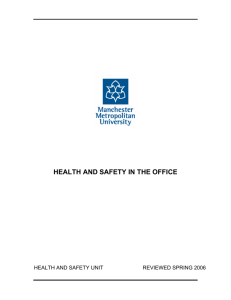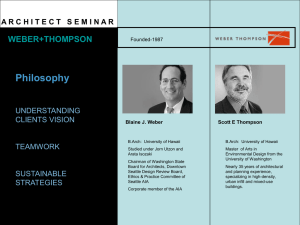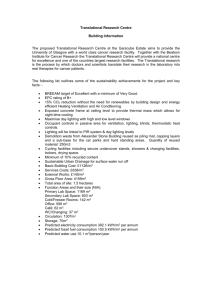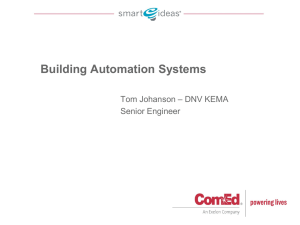Health and Safety in the Office
advertisement
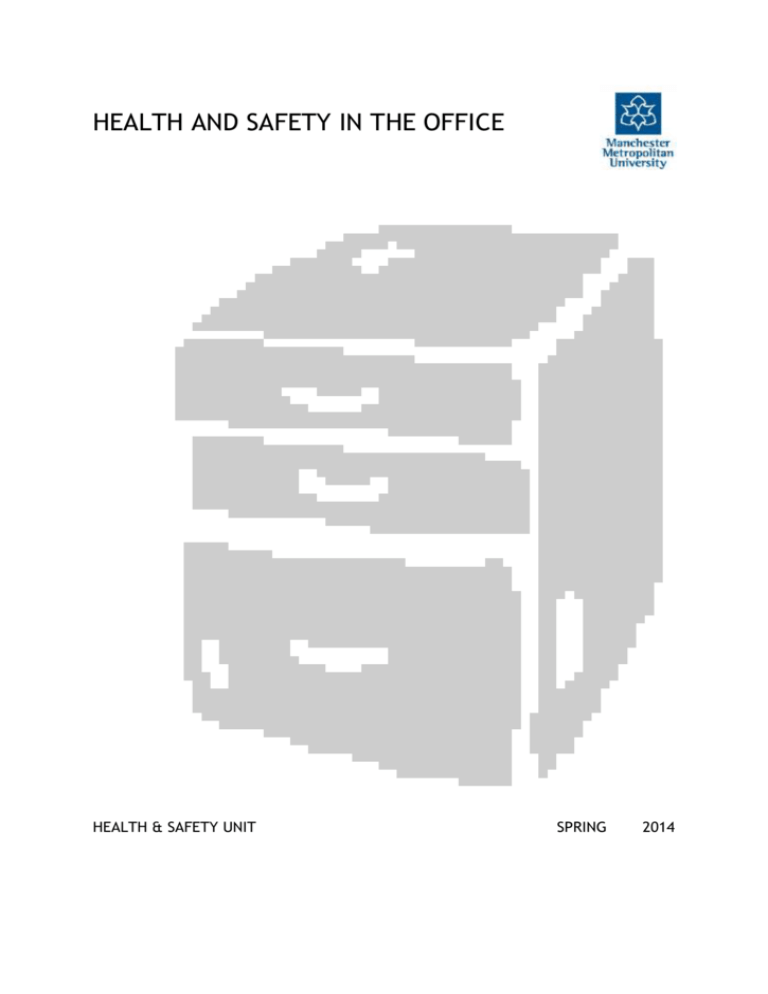
HEALTH AND SAFETY IN THE OFFICE HEALTH & SAFETY UNIT SPRING 2014 CONTENTS 1 INTRODUCTION .................................................................... 2 2 DEFINITION ......................................................................... 2 3 LEGISLATION ....................................................................... 2 4 OFFICE HEALTH AND SAFETY .................................................... 3 4.1 Housekeeping. ......................................................................................................................................... 3 4.2 Fire Safety ............................................................................................................................................... 3 4.3 Electrical Risks........................................................................................................................................ 3 4.4 Storage Arrangements. ........................................................................................................................... 4 4.5 Manual Handling .................................................................................................................................... 4 4.6 Machinery................................................................................................................................................ 4 4.7 Accident Reporting ................................................................................................................................. 5 4.8 VDU's ....................................................................................................................................................... 5 4.9 First Aid Arrangements ......................................................................................................................... 5 4.10 Departmental Inspections ...................................................................................................................... 5 4.11 Training ................................................................................................................................................... 6 4.12 Risk Assessment ...................................................................................................................................... 6 4.1 Emergencies ............................................................................................................................................ 6 5 THE OFFICE ENVIRONMENT ...................................................... 6 5.1 Lighting.................................................................................................................................................... 6 5.2 Noise ......................................................................................................................................................... 7 5.3 Ventilation/Air Quality........................................................................................................................... 7 5.4 Temperature ............................................................................................................................................ 7 5.5 Adequate Space to Work ........................................................................................................................ 7 5.6 Welfare Facilities .................................................................................................................................... 8 6.0 MANAGERS AND SUPERVISORS ROLE .......................................... 8 University guidance notes relevant to Office safety ........................................................................................... 9 Health and Safety Unit staff and contact numbers .......................................................................................... 10 1 INTRODUCTION The Workplace (Health, Safety and Welfare) Regulations 1992 require general precautionary measures to be taken within all workplace environments including offices. This Code of Practice interprets these and other Regulations in the context of the University with the primary aim of maintaining the health and well being of all those staff working in offices. . 2 DEFINITION An office does not have an agreed definition, but it is normally regarded as a place of work where clerical and administrative work activities are carried out. Health and safety issues such as noise, thermal comfort, lighting and ergonomics apply to a variety of workplaces as well as offices; therefore the definition of an office should not be interpreted too narrowly. Health and safety legislation does not make any distinction about specific workplaces. Many years ago there was specific legislation that dealt with offices and shops but this has been repealed. However it would be impractical not to identify offices as being different from laboratories and workshops. In most offices work is of a sedentary nature and involves levels of visual and mental concentration, and very often much of the work is carried out on display screen equipment. These can be seen as common characteristics of an office environment. There are a number of office health and safety issues over which some control will need to be exercised. The following list will have some bearing on the health, safety and well being of office occupants. 3 LEGISLATION The principal legislation concerning offices is the Workplace (Health, Safety & Welfare) Regulations 1992. This legislation covers all workplaces and deals with specifics such as lighting, adequate space, toilet facilities etc. Other legislations applicable to offices are the First Aid at Work Regulations, Manual Handling Operations Regulations, Display Screen Equipment Regulations and Fire Regulatory Reform Order. Risk assessments, employers are required to carry out risk assessments on all hazards which pose a significant risk 2 4 OFFICE HEALTH AND SAFETY 4.1 Housekeeping. Rubbish and temporary storage of material in offices presents a fire hazard and, if in or near walkways, a tripping hazard as well. These can be avoided by implementing a good housekeeping policy. Combustible refuse pending disposal should be stored in a fire resistant room or container set aside for this purpose away from the immediate workplace. Arrangements should be made for its frequent removal. General tidiness in the office is essential to ensure safety and efficiency as well as safeguarding the visual appearance of the office. All floors, passageways, walkways, stairs and other access routes must be kept clear of goods and equipment. 4.2 Fire Safety Fire routes and exits must be adequately signed and kept clear at all times, especially of combustible materials and sources of ignition. Fire doors should be kept shut as appropriate and never wedged or propped open. Any flammable office materials should be stored in appropriate flammables containers and volumes kept to a minimum. Once a fire takes a hold it will continue to develop as long as there is fuel and oxygen to support combustion. This is why it is so important not to have combustible materials in escape routes, and unnecessary stored combustible materials such as paper, cardboard, or plastics in offices and storerooms. Further details are contained in the Fire Policy and associated guidance notes available www. 4.3 Electrical Risks Electrical appliances and equipment should be purchased from a reputable suppliers, manufactured to an appropriate standard and where possible they must be CE marked and BS approved. The equipment should be used correctly and not abused, there should be no unauthorised repairs and the equipment should be periodically subject to a Portable Appliance Test, (PAT). It is a requirement under the Electricity at Work Regulations 1989 that all portable electrical equipment (i.e. any equipment supplied from a mains socket via a plug) should be tested at regular intervals. No unauthorised electrical equipment is permitted on the university’s premises. Electrical equipment must only be brought onto university premises with head of department / Line mangers consent and subject to a Portable appliance test (PAT), which can be arranged via Facilities helpdesk 2882 Cables trailing across floors and walkways present a tripping hazard. If cables have to run across an office, they should be protected by a rubber guard strip. In 3 addition, in many offices there are too few installed sockets for services to be supplied. In such cases, it is acceptable to supply an extension board provided each outlet feeds only low current equipment up to a total current of 13 amps. Other high-powered equipment (eg kettles, etc.) should be supplied direct from a wall socket An occasional visual check is all that is required to identify the majority of faults. 4.4 Storage Arrangements. Only one drawer of a filing cabinet should be open at any one time so that it cannot topple over. Heavier files or objects should be stored in the lower drawers or lower shelves for stability and to reduce manual handling issues. Similarly, objects should not be dangerously placed on the top of shelves from where they might fall and suitable ladders or kickstools should be provided where objects are to be manually lifted from or onto high shelves. This type of operation may require a manual handling assessment. Filing cabinet drawers should never be left open when not directly in use or attendance. 4.5 Manual Handling Poor lifting and carrying technique causes injury to numerous members of staff every year. The Manual Handling Operations Regulations make all lifting operations the subject of assessment. If the load is on the floor or low down always bend your legs and lift with the back straight. Do not attempt to lift or carry too much at a time. If moving heavy loads about for any distance, always use a trolley to avoid putting undue strain on the back. Do not attempt to carry more than you can comfortably manage. Do not carry so much that you cannot see where you are going. Be especially careful when negotiating stairs while carrying things. Always use the handrail and don’t carry so much that you are unable to do so. Good technique is vital in preventing injury. Short courses are available within the University that will provide some basic skills, which if implemented, will help to prevent injury. 4.6 Machinery Generally normal office equipment is not in itself dangerous, provided it is used sensibly and as intended. There are a number of machines that are commonly used in an office environment that could cause harm if used incorrectly or are poorly maintained. All potentially dangerous machines, eg paper guillotines, should be properly guarded to prevent damage to fingers or hands. 4 Never attempt to carry out repairs to a machine yourself and only carry out routine servicing to a machine if you have been properly trained to do so All office machines should be subject to a regular service and maintenance contract to ensure that machines are cleaned internally, filters are changed, and safety is maintained. 4.7 Accident Reporting All accidents, however small must be reported and an accident report form completed. Incidents that have not caused injury but had the potential to cause harm must also be reported, as well as incidents of ill health that are work related. This is done on the University accident report form 4.8 VDU's Computer monitors, or to give them their statutory name Display Screen Equipment (DSE) are used extensively within the University. Staff who are designated users have certain rights. Designated users are entitled to have their workplace ergonomically assessed, (a list of DSE assessors can be found on the Health and Safety Units web site). The assessment will consider lighting, space, desk, layout, seating, welfare and safety etc. They are also entitled to free eye tests and the provision of appropriate corrective eyewear for DSE use. 4.9 First Aid Arrangements The University has an extensive first aid system with fully qualified first aiders on each site. This system is normally backed up with emergency first aiders who have received basic training. The fully qualified first aiders undertake an initial three days course with a practical examination, and must undergo a refresher course within three years. First aiders are provided with a first aid case and cover a site although their primary function is to provide cover for their own department. Notices are posted throughout a site, normally on a floor-by-floor basis, listing the names and phone numbers of first aiders. 4.10 Departmental Inspections Each department is obliged to undertake a safety inspection of their workplace at least annually. The department should organise a small team to undertake the inspection. A report must be prepared and submitted to the head of department for action. A copy of the report with action taken or remedial action still required must be submitted to the Local Site Health & Safety Panel who monitor the site health and safety management systems. Pre-prepared inspection checklists are helpful, and enable effective use of time and resources. Where the department or area to be inspected is extensive then the inspection should be divided into manageable sections. 5 4.11 Training Your employer has a duty to train all staff in the use of equipment and the day-today conduct of work. In the office environment this includes specific training in the use of VDUs and other office electronics, the ergonomics of office work and the correct way to lift and carry awkward loads. Training in the use of fire equipment and emergency procedures is also mandatory. 4.12 Risk Assessment Risk assessment is not new and has always been part of working life. Identifying how to undertake a task without incurring harm or damage is a risk assessment. This methodology has been called many things in the past e.g. system of work, safe working procedure, local rules, method of work. As long as the significant hazards of any activity have been assessed, the risks identified and risk control precautions implemented, then the obligation has been satisfied. A number of generic risk assessments have been constructed in respect of office based activities, these should be available from your Line manager. 4.1 Emergencies In the event of fire or alarm all occupants must follow the procedures shown on the Fire Action Notices displayed by all building exits. The procedures are also laid down in Faculty Emergency Procedures. Know your way out of the building, and remember it may not be possible to exit the way you came in, so become familiar with alternative exit routes. Whenever you evacuate a building make your way to the Assembly point shown on the fire action notices, and wait for permission to re-enter the building, or other instructions that may be given 5 THE OFFICE ENVIRONMENT 5.1 Lighting Lighting should not be so bright that the contrast between screen characters is diminished or so dark that it is difficult to see to work. A lighting intensity of between 300 and 500 Lux measured horizontally at the work surface height is considered satisfactory for a combination of screen work and non-screen tasks. Room and task lighting eg desk lamps must be suitable and sufficient for the work process. The quality of light is important and a mixture of good natural light and artificial systems is the best method of providing the correct lighting level. It is also important that the direction of natural light can be controlled to ensure an absence of reflections on the DSE screens. 6 5.2 Noise Noise at work is controlled by legislation to prevent harm to hearing. Action levels are prescribed where an employer should instigate protective measures. These action levels would not normally be exceeded in an office. However noise can be a nuisance and a distraction if concentration is required. Office layouts can prevent unnecessary noise e.g. large photocopiers being placed in their own machines room. Desk printers are now much quieter than they were several years ago, and this has helped reduce the overall noise level in offices. Where noise is a problem then other control methods such as acoustic absorbent room dividers, or acoustic absorbent wall or ceiling tiles can be considered. 5.3 Ventilation/Air Quality Ventilation refers to the rate of exchange of air in a specified area of a building. This usually expressed in the number of air changes in a given time. Many office buildings use re-circulating air systems to provide ventilation. Suitable air filtering systems are required to ensure the quality level of the re-circulated air. The purpose of ventilation is to provide occupants with an acceptable quality of inhaled air, and to remove or dilute airborne contamination. Do not confuse ventilation with air conditioning, which is designed to provide air at the temperature and humidity required for thermal comfort . The relative humidity should be between 40%-60% and if individuals are suffering from dry, red or itchy eyes then humidity may be too low. 5.4 Temperature Thermal comfort is subjective but describes an individual’s satisfaction with their temperature environment. There are a number of factors that can affect thermal comfort including air movement, humidity, type and amount of clothing worn, and the type of work being undertaken. The temperature in workrooms should normally be at least 16 degrees Celsius unless much of the work involves severe physical effort in which case the temperature should be at least 13 degrees Celsius. These temperatures may not however ensure reasonable comfort depending on other factors such as air movement and relative humidity. These temperatures refer to readings taken using a dry bulb thermometer close to the work station at working height and away from the windows. If you feel that you have a problem with the temperature within your office please contact the help desk on ext 2882 5.5 Adequate Space to Work There is a legal minimum volumetric space requirement of 11m3 for persons who habitually occupy one workroom. This measurement does not take into account furniture and fittings, these must be assessed separately. This does not mean 7 that each person must have 11m3 allocated on an individual basis, but it does mean that if three people are habitually occupy an office then the minimum volumetric requirement must be 33m3. An assessment of doorways, walkways, access to equipment, means of escape and storage must be undertaken when determining an office space and layout 5.6 Welfare Facilities Welfare facilities include the provision of adequate toilet and washing facilities. The facilities should be in sufficient numbers and be clean, well maintained and have adequate ventilation. Hot and cold water, soap and hand drying facilities should also be in place. The provision of suitable drinking water is also a statutory requirement. 6.0 MANAGERS AND SUPERVISORS ROLE Managers and Supervisory staff have specific duties concerning the health and safety of staff they are expected to manage or supervise. These include ensuring staff are properly trained, are aware of the principal hazards and risk control systems at their place of work, know what to do in the event of an emergency and ensuring that accidents are reported. 8 University guidance notes relevant to Office safety The University Health and Safety Policy Health and Safety - whose responsibility is it anyway? A practical guide for Heads of Department University Emergency Evacuation Procedures Guidance notes for the Evacuation of Disabled Persons Fire Precautions and Notice Boards Guidance notes on the Display Screen Equipment Regulations 1992 Guidance notes on Departmental Inspections Managing Manual Handling – A guide for Managers and Heads of Department Risk Assessment – A University Guide to practical Risk Assessment under the Management of Health and Safety at Work Regulations 1992 The University’s Policy on Smoking Trade Union appointed Safety Representatives – A management guide for Senior Staff All these guides and many others are available on the University Health and Safety Unit Website at the following address; www.mmu.ac.uk/personnel/h-s/welcomeFrame-7.htm 9 Health and Safety Unit staff and contact numbers Health and Safety Office Minshull House University H&S Advisor Mr Chris Bolam Tel 3309 Fax 6862 E-mail c.bolam@mmu.ac.uk Assistant University H&S Advisor Miss Samina Zahoor Tel 3314 Fax 6862 e-mail s.zahoor@mmu.ac.uk Assistant University H&S Advisor Mr Chris Thornley Tel 4655 Fax 6862 e-mail c.thornley@mmu.ac.uk Assistant University H&S Advisor Mr Vince Bashford Tel 3368/5489 Fax 6862 e-mail v.bashford@mmu.ac.uk Radiation Officer Mrs Marina Wain Tel 6406 Fax 6862 e-mail m.wain@hotmail.com Health and Safety Oficer Miss Paula Gibbons Tel 3317 Fax 6862 e-mail p.gibbons@mmu.ac.uk 10
